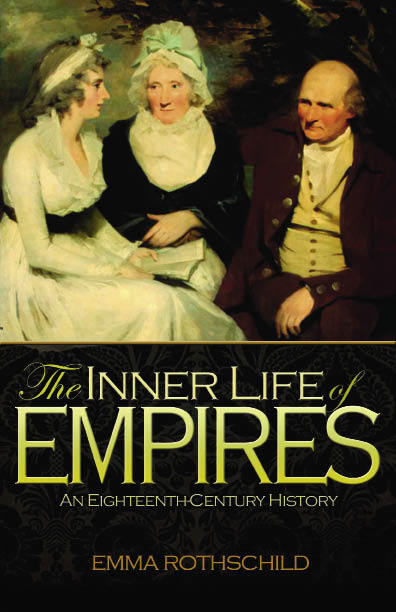If you wish to see how Scotland changed in the century after the Act of Union (1707), you might visit and compare the two houses in Edinburgh that belong to the National Trust for Scotland. Gladstone’s Land, built for a wealthy merchant in the 17th century, is a six-storey tenement in the old town, a place rich with period ambience but narrow, confined and in its heyday unhygienic. It could hardly contrast more vividly with The Georgian House in the new town’s Charlotte Square, which has space and elegance and the architecture of Robert Adam.
If you would like to know why such a transformation took place, what opportunities the Union gave to enterprising Scots, a good start would be to read Emma Rothschild’s excellent book on the lives of the Johnstone siblings, seven brothers and four sisters who were born between 1723 and 1739. They were the children of an impecunious laird with a small estate in Dumfriesshire, tribal lair of the Johnstones, a clan formerly notorious for border reiving and feuds with clan Maxwell. Yet the creation of Great Britain enabled the siblings to break out, not just to England but thence to America, the Caribbean and the Bay of Bengal.
The brothers each had multiple careers. Five of them lived at times in north America, four became members of parliament in London, four served in the armed forces, three joined the East India Company, and six were owners of slaves — albeit sometimes reluctantly, through inheritance. One of the sisters was as adventurous as any of them, fighting for Bonnie Prince Charlie, and, after her capture, escaping from Edinburgh Castle to France. None of the girls was the ‘docile creature’ of the epoch’s stereotype, obedient in all things to the menfolk.
The East India Company made the fortune of John Johnstone, who fought at Plassey, yet became an enemy of Lord Clive, who regarded him as greedy, corrupt and rapacious, a judgment repeated in the next century by Macaulay. Even by the indulgent standards of the Company, the elephants, jewellery and other ‘presents’ he received from Indian princes and bankers were regarded as excessive. One of his brothers made money less conventionally, by selling Ganges water at one rupee a bottle to Indian pilgrims unable to travel to Benares. Yet India was famous as a graveyard as well as an opportunity. Another brother expired at the age of 18 in the Black Hole of Calcutta, and two of his nephews died soon after their arrival in the subcontinent.
At home the family became sufficiently rich and prominent for various members to be painted by Gainsborough, Raeburn, Romney and Angelica Kauffmann. Yet none of them quite reached the top. The MPs did not become ministers, and John’s offer to become Governor of Bengal was rejected by the directors of the East India Company, who understandably preferred Warren Hastings. Nor did their social ambitions always succeed. William Johnstone, who adopted the surname of his wife (the heiress Frances Pulteney) and built Pulteney Bridge in Bath, apparently tried to have his daughter married to William Pitt and himself rewarded with an earldom. Happily for the girl, the scheme failed, although she later pleased her father by becoming Lady Bath.
The author describes how the Johnstones lived on the edges of the Enlightenment as well as of the empire. They knew Adam Smith and David Hume, and one brother employed Adam Ferguson as his secretary on a political mission to America. They were also witnesses, and sometime participants, in the great developments of the age, the American Revolution, the abolition of the slave trade and the reform of the East India Company. They saw themselves as men of principle, defenders of the oppressed, and they talked a lot about rights and liberties. Two brothers supported the fight against the slave trade, though their efforts were largely negated by wealthy William, who was the absentee landowner of several plantations in the West Indies.
Emma Rothschild makes no great claims for her subjects, but she recognises that they were ‘unusually enterprising’ and of an ‘enlightened disposition’. Their inquisitive natures, their lack of fatalism and their inherent restlessness made them representative of their time. In an age when the voyage between London and Calcutta might take six months, Gideon Johnstone made little fuss about living successively in Jamaica, Murshidabad, Benares, Basra, Mauritius, the Cape of Good Hope, Nantucket, New York and then in Jamaica once more.
The Inner Life of Empires is far more than the history of a Scottish family liberated from its parsimonious glen. The author is a scholar very much at home in the 18th century and writes with grace and sensitivity of the age, of the ideas of the Enlightenment and of the political tones of the period. Near the end she modestly hopes she has written not only a portrait of a family but ‘a history of the sentiments and thoughts’ of its time. She has.






Comments